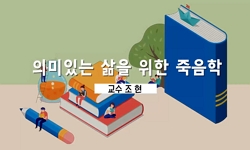In Hungarian literature, the preoccupation with the motif of death is found in the member authors of Nyugat as well as those in the middle and late 20th century. Szabó Magda is one of the authors that represent such trend. Her representative work Az�...
http://chineseinput.net/에서 pinyin(병음)방식으로 중국어를 변환할 수 있습니다.
변환된 중국어를 복사하여 사용하시면 됩니다.
- 中文 을 입력하시려면 zhongwen을 입력하시고 space를누르시면됩니다.
- 北京 을 입력하시려면 beijing을 입력하시고 space를 누르시면 됩니다.
부가정보
다국어 초록 (Multilingual Abstract)
The motif of death as a means of theme formation in Az őz enables readers to get access to the work’s theme effectively through a well-organized structure. Death does not remain a simple motif any more, but offers logicality to theme approach by enhancing its level gradually. Szabó Magda gets out of the simple dispersion of death motifs, deploying the presages of various deaths from microorganism to human beings and the accidents of death step by step. In the first stage, she hints at future incidents with the things symbolic of deaths, not with real deaths. In this stage of presages, she likes to use a technique symbolic of death through a color. Especially, purple, symbolizing death, is intentionally deployed in Hungarian literature. The diverse presages of death maximize their effects by upgrading themselves in order of color, nonliving things, living things and God little by little. There are various deaths around Eszter in the stage following the presages of death. He is not directly involved in them, but influenced by them. According to their strengths affecting him psychologically, the deaths can be upgraded in order of the deaths of Emi, Uncle Ince, Judge Domi, Aunt Juszti and his parents. In the third stage, Eszter causes deaths, directly taking part in them, which is represented by those of a roe deer and Lőrinc. Within the range of the direct deaths, the death of a roe deer, caused by Eszter as a child, plays a part of a presage of Lőrinc’s death. After all, so many presages and deaths can be understood as the stage-specific devices in the process of reaching the last station, i.e. Lőrinc’s death. In the process, deaths are gradationally presented from stage to stage to represent the work’s theme. The present work of Szabó Magda is characterized by the gradational presentation of deaths and the ensuing effective theme formation as well as fine description.
In Hungarian literature, the preoccupation with the motif of death is found in the member authors of Nyugat as well as those in the middle and late 20th century. Szabó Magda is one of the authors that represent such trend. Her representative work Azőz calmly depicts the psychological conflicts of its main character Encsy Eszter from the first-person point of view through many deaths, loves and jealousies surrounding him. The deaths are so manifold and multilayered that they are classified into human vs. animal deaths, the deaths the protagonist is associated with vs. looks at from an observer's point of view, past vs. future deaths, the deaths in reality vs. imagination, natural death vs. suicide or killing and more.
The motif of death as a means of theme formation in Az őz enables readers to get access to the work’s theme effectively through a well-organized structure. Death does not remain a simple motif any more, but offers logicality to theme approach by enhancing its level gradually. Szabó Magda gets out of the simple dispersion of death motifs, deploying the presages of various deaths from microorganism to human beings and the accidents of death step by step. In the first stage, she hints at future incidents with the things symbolic of deaths, not with real deaths. In this stage of presages, she likes to use a technique symbolic of death through a color. Especially, purple, symbolizing death, is intentionally deployed in Hungarian literature. The diverse presages of death maximize their effects by upgrading themselves in order of color, nonliving things, living things and God little by little. There are various deaths around Eszter in the stage following the presages of death. He is not directly involved in them, but influenced by them. According to their strengths affecting him psychologically, the deaths can be upgraded in order of the deaths of Emi, Uncle Ince, Judge Domi, Aunt Juszti and his parents. In the third stage, Eszter causes deaths, directly taking part in them, which is represented by those of a roe deer and Lőrinc. Within the range of the direct deaths, the death of a roe deer, caused by Eszter as a child, plays a part of a presage of Lőrinc’s death. After all, so many presages and deaths can be understood as the stage-specific devices in the process of reaching the last station, i.e. Lőrinc’s death. In the process, deaths are gradationally presented from stage to stage to represent the work’s theme. The present work of Szabó Magda is characterized by the gradational presentation of deaths and the ensuing effective theme formation as well as fine description.
국문 초록 (Abstract)
『노루』에 나타난 주제의 형상화 수단으로서의 죽음 모티프는 짜임새 있는 구조로 인해 독자들에게 효과적으로 주제를 드러내 주고 있다. 죽음이 소설의 단순한 하나의 모티프에 그치지 않고 죽음의 단계를 점층적으로 높여감으로서 주제 접근에 논리성을 제공한다. 써보 머그더는 죽음 모티프의 단순한 산재(散在)를 지양하고 미생물에서부터 시작하여 생물, 그리고 인간에 이르는 다양한 죽음의 복선들과 죽음의 사건들을 점층적으로 배치하고 있다. 첫 단계에서는 실제적 죽음이 아닌 죽음을 상징하는 사물들을 통해 향후 일어날 사건을 암시해주고 있다. 이 복선 단계에서 써보 머그더가 애용한 방법이 색깔을 통한 죽음의 상징기법이다. 특히 헝가리에서 죽음을 상징하는 보라색이 의도적으로 여러 곳에 배치되어 있다. 죽음에 대한 다양한 종류의 복선 내에서도 색깔 → 무생물 → 생물 → 신의 단계로 정도를 점층적으로 높여가며 복선의 효과를 극대화하고 있다. 죽음과 관련한 복선 다음 단계로 에스테르 주변에서 일어난 다양한 죽음이 나타나 있다. 에스테르가 직접적으로 그 죽음에 간여하지는 않았지만 그 영향이 에스테르에게 미치는 죽음들이다. 간접 관계에 있는 이 죽음들 역시 에스테르에게 심적으로 영향을 미치는 정도에 따라 서열화 시켜보면 에밀의 죽음 → 인체 아저씨의 죽음 → 판사인 도미 아저씨의 죽음 → 유스티 아주머니의 죽음 → 에스테르 본인의 아버지와 어머니의 죽음의 순서로 나열 할 수 있다. 그 다음 단계의 죽음으로는 에스테르가 직접 죽음에 간여하고 그 죽음의 원인을 제공하는 경우로, 노루와 뢰린츠의 죽음이 해당된다. 직접적 죽음 내에서도 노루의 죽음은 에스테르가 어린 시절에 저지른 사건으로 뢰린츠의 죽음에 대한 복선 역할을 한다. 결국 이렇게 많은 복선과 죽음의 제시는 결국 뢰린츠의 죽음이라고 하는 최종 종착역에 이르기 위한 과정으로 이해할 수 있으며 그 과정에서 주제를 효과적으로 나타내기 위해 죽음을 단계에 따라 점층적으로 제시하고 있다. 이러한 써보 머그더의 죽음의 점층적 제시와 이를 통한 효과적인 주제 형상화는 그녀의 섬세한 묘사와 더불어 이 작품의 특징을 형성하고 있다.
헝가리 문학에서 죽음 모티프에 대한 천착은 뉴거트 작가들 뿐 만 아니라 20세기 중후반 작가들에서도 동일하게 찾아볼 수 있다. 그 대표적인 작가 중 한 명이 헝가리 여류작가 써보 머그더(S...
헝가리 문학에서 죽음 모티프에 대한 천착은 뉴거트 작가들 뿐 만 아니라 20세기 중후반 작가들에서도 동일하게 찾아볼 수 있다. 그 대표적인 작가 중 한 명이 헝가리 여류작가 써보 머그더(Szabó Magda)이다. 그녀의 대표작『노루(Az őz)』역시 주인공 엔치 에스테르(Encsy Eszter)를 둘러 싼 많은 죽음과 사랑, 그리고 질투를 통해 주인공의 심리적 갈등을 1인칭 관찰자적 시점에서 담담하게 그리고 있다. 분석 작품에 등장하는 죽음들은 다양한 분류가 가능한데 동물의 죽음과 사람의 죽음, 주인공이 연루된 죽음과 주인공이 관찰자적 시점에서 바라본 외부적 죽음, 과거에 일어난 죽음과 앞으로 일어날 죽음, 현실 속 죽음과 상상 속 죽음, 자연적 죽음과 타인 혹은 자신에 의한 죽음 등 광범위하고 다층적이다.
『노루』에 나타난 주제의 형상화 수단으로서의 죽음 모티프는 짜임새 있는 구조로 인해 독자들에게 효과적으로 주제를 드러내 주고 있다. 죽음이 소설의 단순한 하나의 모티프에 그치지 않고 죽음의 단계를 점층적으로 높여감으로서 주제 접근에 논리성을 제공한다. 써보 머그더는 죽음 모티프의 단순한 산재(散在)를 지양하고 미생물에서부터 시작하여 생물, 그리고 인간에 이르는 다양한 죽음의 복선들과 죽음의 사건들을 점층적으로 배치하고 있다. 첫 단계에서는 실제적 죽음이 아닌 죽음을 상징하는 사물들을 통해 향후 일어날 사건을 암시해주고 있다. 이 복선 단계에서 써보 머그더가 애용한 방법이 색깔을 통한 죽음의 상징기법이다. 특히 헝가리에서 죽음을 상징하는 보라색이 의도적으로 여러 곳에 배치되어 있다. 죽음에 대한 다양한 종류의 복선 내에서도 색깔 → 무생물 → 생물 → 신의 단계로 정도를 점층적으로 높여가며 복선의 효과를 극대화하고 있다. 죽음과 관련한 복선 다음 단계로 에스테르 주변에서 일어난 다양한 죽음이 나타나 있다. 에스테르가 직접적으로 그 죽음에 간여하지는 않았지만 그 영향이 에스테르에게 미치는 죽음들이다. 간접 관계에 있는 이 죽음들 역시 에스테르에게 심적으로 영향을 미치는 정도에 따라 서열화 시켜보면 에밀의 죽음 → 인체 아저씨의 죽음 → 판사인 도미 아저씨의 죽음 → 유스티 아주머니의 죽음 → 에스테르 본인의 아버지와 어머니의 죽음의 순서로 나열 할 수 있다. 그 다음 단계의 죽음으로는 에스테르가 직접 죽음에 간여하고 그 죽음의 원인을 제공하는 경우로, 노루와 뢰린츠의 죽음이 해당된다. 직접적 죽음 내에서도 노루의 죽음은 에스테르가 어린 시절에 저지른 사건으로 뢰린츠의 죽음에 대한 복선 역할을 한다. 결국 이렇게 많은 복선과 죽음의 제시는 결국 뢰린츠의 죽음이라고 하는 최종 종착역에 이르기 위한 과정으로 이해할 수 있으며 그 과정에서 주제를 효과적으로 나타내기 위해 죽음을 단계에 따라 점층적으로 제시하고 있다. 이러한 써보 머그더의 죽음의 점층적 제시와 이를 통한 효과적인 주제 형상화는 그녀의 섬세한 묘사와 더불어 이 작품의 특징을 형성하고 있다.
참고문헌 (Reference)
1 김서영, "정신분석학 연구방법론 일반의 학문적 의의 -프로이트의 <모세상> 분석을 중심으로" 한국해석학회 (23) : 55-77, 2009
2 최태숙, "실비아 플라스의 시와 산문에서 우울증과 죽음의 양상" 한국영어영문학회 55 (55): 641-659, 2009
3 이진국, "삼국연의의 복선에 관한 연구" 11 : 149-166, 1998
4 박우수, "사랑과 죽음의 이중성: 『로미오와 줄리엣』과 모순어법" 한국셰익스피어학회 41 (41): 417-439, 2005
5 유진일, "글루미 선데이. in: 동유럽영화이야기" 한국외국어대학교출판부 228-237, 2009
6 "http://www.libri.hu/konyv/szimbolumtar.html"
7 "http://www.bkiado.hu/netre/Net_szimbolum/szimbolumszotar.htm#lila"
8 "http://www.bkiado.hu/netre/Net_szimbolum/szimbolumszotar.htm"
9 Lóránt Czigány, "The oxford history of hungarian literature" Clarendon press 461-462, 1984
10 Karkovány Judit, "Szabó Magda. in: Magda 7×7 hires mai magyar regény" Móra könyvkiadó 45-53, 1997
1 김서영, "정신분석학 연구방법론 일반의 학문적 의의 -프로이트의 <모세상> 분석을 중심으로" 한국해석학회 (23) : 55-77, 2009
2 최태숙, "실비아 플라스의 시와 산문에서 우울증과 죽음의 양상" 한국영어영문학회 55 (55): 641-659, 2009
3 이진국, "삼국연의의 복선에 관한 연구" 11 : 149-166, 1998
4 박우수, "사랑과 죽음의 이중성: 『로미오와 줄리엣』과 모순어법" 한국셰익스피어학회 41 (41): 417-439, 2005
5 유진일, "글루미 선데이. in: 동유럽영화이야기" 한국외국어대학교출판부 228-237, 2009
6 "http://www.libri.hu/konyv/szimbolumtar.html"
7 "http://www.bkiado.hu/netre/Net_szimbolum/szimbolumszotar.htm#lila"
8 "http://www.bkiado.hu/netre/Net_szimbolum/szimbolumszotar.htm"
9 Lóránt Czigány, "The oxford history of hungarian literature" Clarendon press 461-462, 1984
10 Karkovány Judit, "Szabó Magda. in: Magda 7×7 hires mai magyar regény" Móra könyvkiadó 45-53, 1997
11 Szabó Magda, "Az őz" Európa könyvkiadó 2005
12 Vasy Géza, "Az 1945 utáni magyar irodalom" Krónika Nova Kiadó 58-65, 2003
13 Béládi Miklós, "A magyar irodalom története 1945-1975 Ⅲ/2" 736-747, 1990
동일학술지(권/호) 다른 논문
-
- 한국외국어대학교 외국학종합연구센터 동유럽·발칸연구소
- 김용덕(Yong-Deog Kim)
- 2010
- KCI등재
-
Changes in Comparative Advantage of OECD East European Countries and Korea
- 한국외국어대학교 동유럽발칸연구소
- 김승진(Seung Jin KIM)
- 2010
- KCI등재
-
러시아어 부치사(adposition)에 대한 유형론적 고찰
- 한국외국어대학교 동유럽발칸연구소
- 허성태(Heo, Seong-Tae)
- 2010
- KCI등재
-
루마니아인을 뜻하는 어휘 român 에 대한 어원론적 고찰
- 한국외국어대학교 동유럽발칸연구소
- 이문수(Lee Mun-Suh)
- 2010
- KCI등재
분석정보
인용정보 인용지수 설명보기
학술지 이력
| 연월일 | 이력구분 | 이력상세 | 등재구분 |
|---|---|---|---|
| 2022 | 평가예정 | 재인증평가 신청대상 (재인증) | |
| 2019-01-01 | 평가 | 등재학술지 유지 (계속평가) |  |
| 2016-01-01 | 평가 | 등재학술지 유지 (계속평가) |  |
| 2013-01-01 | 평가 | 등재학술지 유지 (기타) |  |
| 2013-01-01 | 학술지명변경 | 한글명 : 동유럽연구 -> 동유럽발칸연구 |  |
| 2010-01-01 | 평가 | 등재 1차 FAIL (등재유지) |  |
| 2007-01-01 | 평가 | 등재학술지 선정 (등재후보2차) |  |
| 2006-01-01 | 평가 | 등재후보 1차 PASS (등재후보1차) |  |
| 2004-01-01 | 평가 | 등재후보학술지 선정 (신규평가) |  |
학술지 인용정보
| 기준연도 | WOS-KCI 통합IF(2년) | KCIF(2년) | KCIF(3년) |
|---|---|---|---|
| 2016 | 0.13 | 0.13 | 0.17 |
| KCIF(4년) | KCIF(5년) | 중심성지수(3년) | 즉시성지수 |
| 0.16 | 0.15 | 0.459 | 0.05 |




 KCI
KCI






